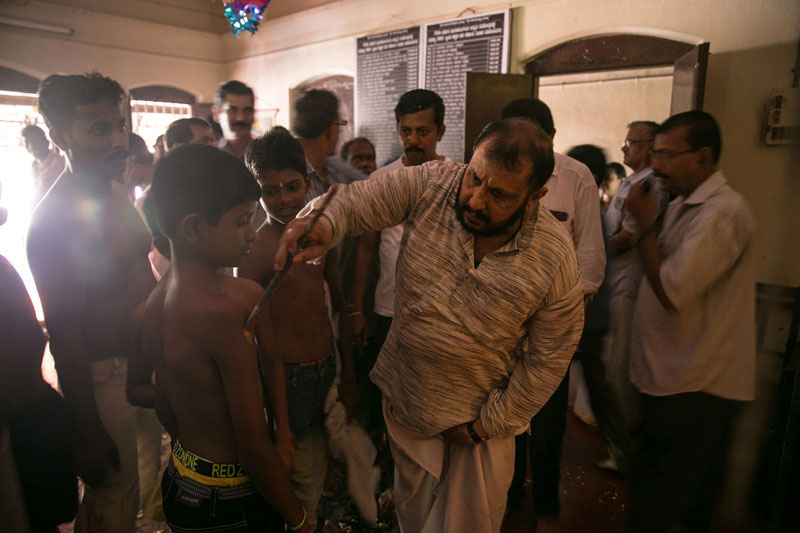
Stripes on body, photo essay by Pradeep KS
Around the months of September and October each year, as the ten days of Dussera near, boys and men in the region of Karnataka known as Dakshin Kannada prepare to become tigers. Goddess Durga’s steed, the tiger is an animal that is at once fierce and beautiful, an emblem of wild majesty. It so happens that the thick forests of the Western Ghats that run through the area are among the few landscapes in India, identified as home to Panthera tigris tigris, the Bengal tiger.
Hulivesha, which literally translates to ‘tiger mask’, is a folk dance form that honours the Devi and her favorite animal. For years, folk dancers of Hulivesha have embraced the spirit of the animal, painting its stripes on their skin, allowing themselves to be moved by the drumbeats to celebrate the animal’s qualities.





For the men and boys who partake in the dance, it is an extraordinary time, a period when they cease to be ordinary people engaged in the mundane routines of everyday life, if only for an evening or two. Donning the tiger stripes is a form of worship, a mode of penance, and a path to wish fulfillment. The group’s photographed in this series, for instance, came with a diverse set of hopes and prayers. One member wished for divine blessings to build a house, another for a match for his daughter. A child with a leg problem prayed for his leg to heal; if it did, he promised to participate the following year.
The painting of the body is a long and laborious process that often starts early in the morning. The painters begin with the colours yellow and white. All the dancers, often 40 to 50 people, queue up to get painted, and then wait for a couple hours for the paint to dry. Only then it is time for the colour black. They wait for their turns patiently, and are rewarded with glistening black stripes. The final round of paint is for the eyes, and then the last bits of touching up. Waiting for the paint to dry is part of the test. Hands must not touch the body, and so they spread their bodies out to dry, sometimes holding onto a line strung across the room for support.
It is twilight before they are ready, and they go to pray at the temple, before their dance begins. They dance at the temple, but also on the streets and in front of houses. The dancing ends way past midnight and the dancers spend the early hours of the morning removing the paint off their bodies, using turpentine or kerosene. They cannot sleep with it on as it is very uncomfortable. (Talcum powder is often used during the dance to provide some relief.) Many of them are left with rashes. Yet, each year they do it again. The idea of the tiger as powerful, spiritual and unknowable captivates and mesmerises us. It elicits reverence like no other animal does. (by Pradeep KS)















Thank you so much for this. Hulivesha is so special to me and is a link back to my childhood. I remember being traumatized by it as a kid growing up in Dakshina Kannada, so much so that I would get nightmares about being chased by the ‘Hulivesha’ or tigers in general well into adulthood. The most terrifying aspect was that if the Hulivesha is donned by someone familiar , they’d come right into the house in the final stage of the dance to collect the money.This would especially happen in my grandparent’s place. My grandma being a teacher was known to most people in town, so any Huli would come right into the house asking “Teacher ijjera” ? The adults at home would make me give money to the Hulivesha and then get the dancer to remove the mask to show that it is just a human and not a real tiger to help me get over my fear.
As a child, I’d beg people at home to say ‘No’ to the Hulivesha troupe and send them away before they entered the compound. But there were a couple of them (like the ‘Sharada Huli” that is associated with the temple) which doesn’t take ‘No’ for an answer ! Just hearing the beats at a distance was scary and as the sound of the beats grew louder and louder, you knew it is approaching in the direction of your house and is about to enter your gate any time.
And now as an adult, I hardly ever manage to be at my hometown during Dasara, and if/when I’m there, I desperately wait to hear the sound of the Hulivesha beat. Once I’d even asked my grandad as he went out to the town center to request any Hulivesha troupe to come home !
Wish I could travel back in time and soak in every moment of those goose bump inducing times.